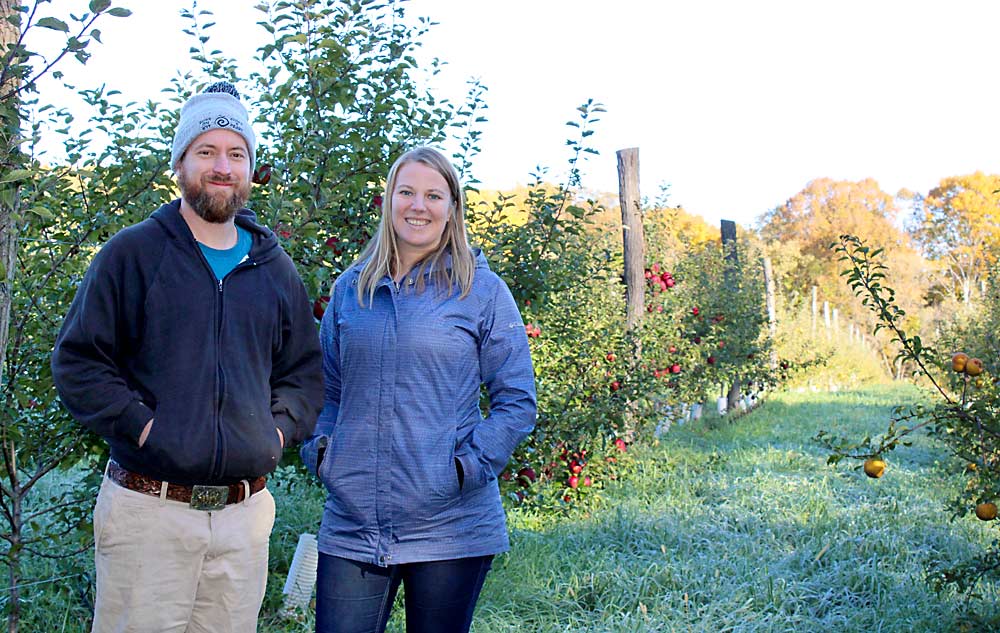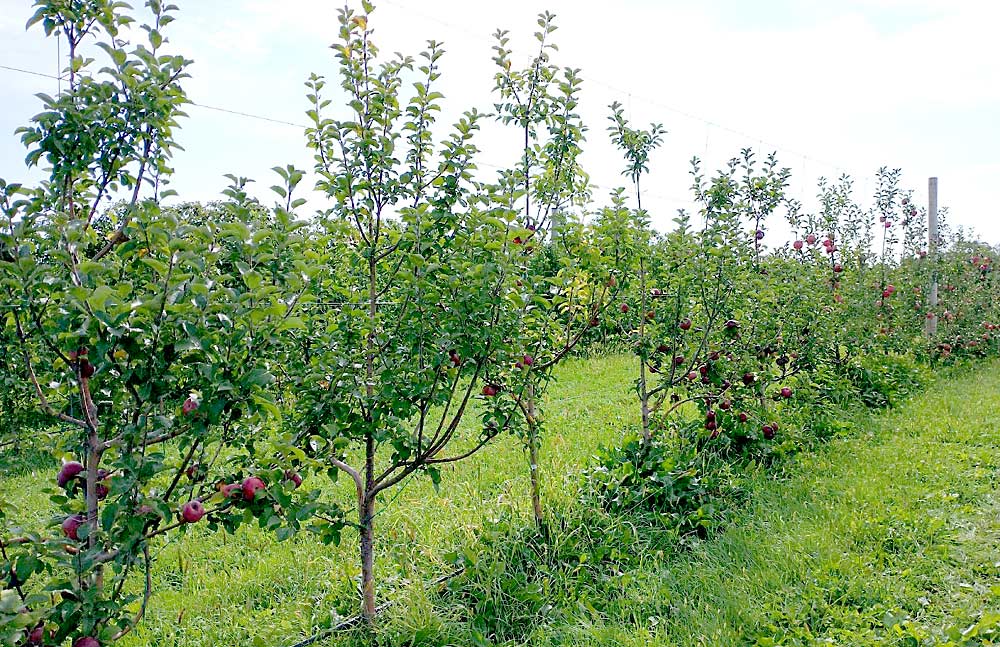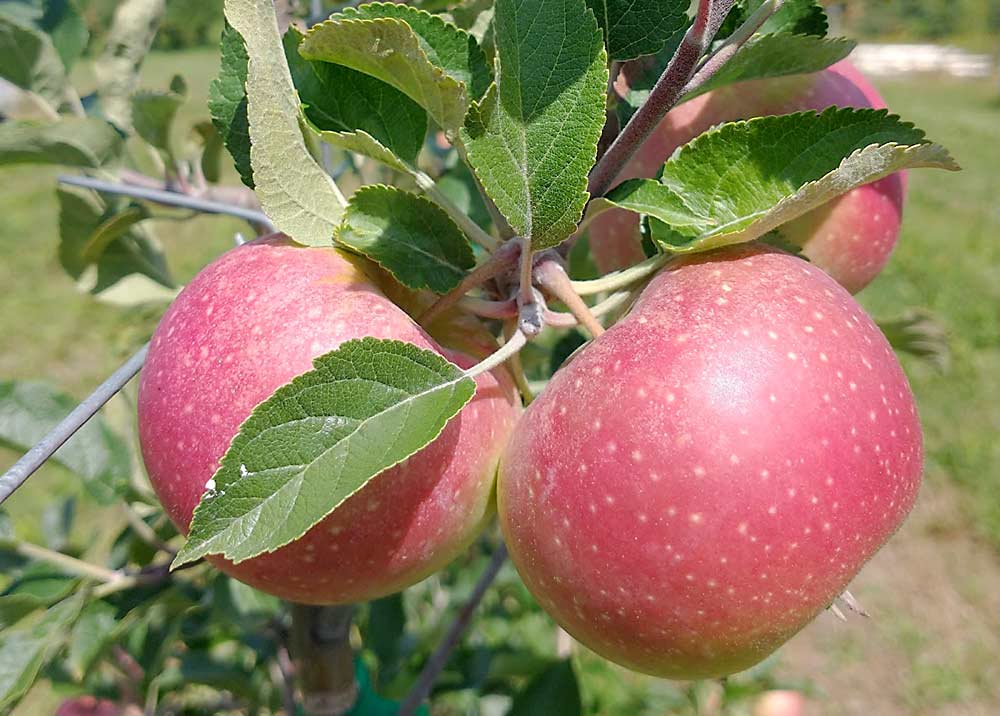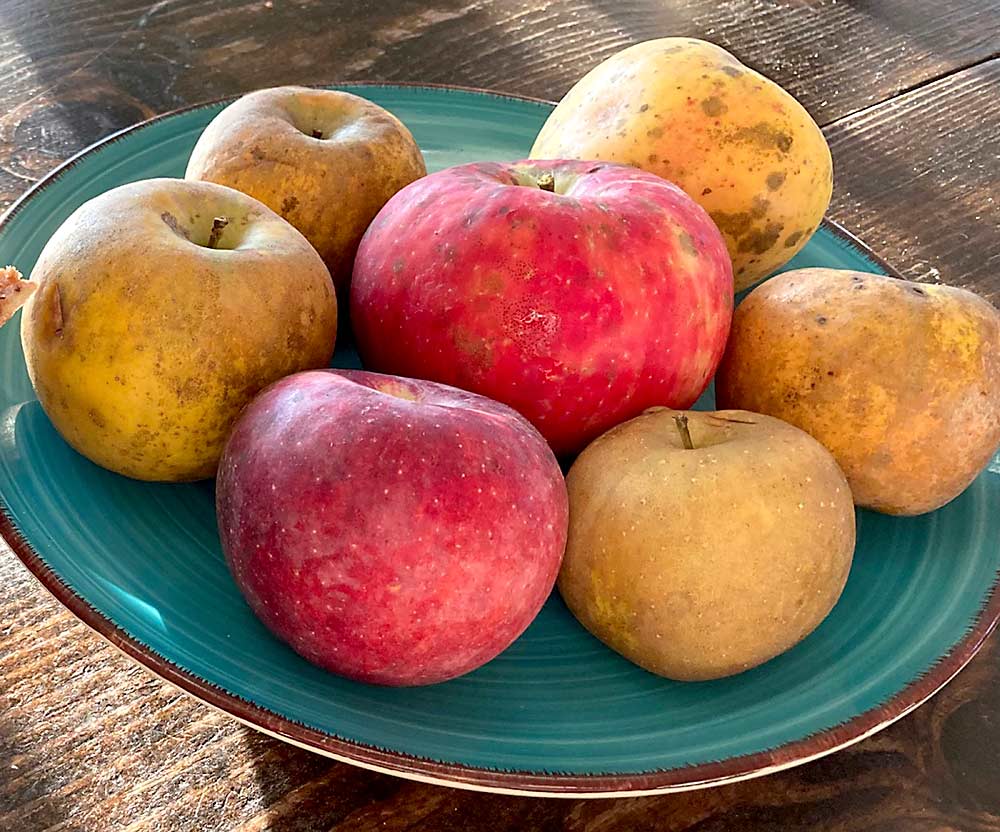
Will European cider apples grow well in Zone 4 orchards? The answer is yes, at least for several varieties, according to newly available results from a University of Minnesota study that put a dozen varieties to the test.
Conducted over the 2020 and 2021 seasons, the study was designed to help colder-climate growers tap into the North American hard-cider market by giving cidermakers what they want: apples with high flavor, tannins and acid, said principal investigator and UMN extension educator Annie Klodd.
“The European varieties were bred and selected for cider over decades, and cidermakers know that combining characteristics from a bitter-sharp or bittersweet with a sweet can make a really good cider,” she said. “We wanted to see if we were able to grow some of these well-known, well-liked and well-tested European varieties here.”
In a second part of the study, which was completed in April, a panel of enologists and cidermakers evaluated the juice qualities of Minnesota apples to see which might also meet cidermakers’ criteria.
“Data on titratable acidity, pH and Brix are already well known for a lot of the European varieties, but our Minnesota varieties had not really been characterized for cider before, so we collected that same data on them,” Klodd said. The results provided good news for orchards in U.S. Department of Agriculture Plant Hardiness Zone 4, with four varieties judged as excellent cider apples.

Strong European performers
Funded by a Minnesota Department of Agriculture Specialty Crop Block Grant and UMN, the study included 12 European cider apples: Ashmead’s Kernel, Brown’s, Bulmer’s Norman, Chisel Jersey, Dabinett, Foxwhelp, Harry Masters Jersey, Kingston Black, Major, Porter’s Perfection, Tremlett’s Bitter and Yarlington Mill. All were grown and evaluated at each of seven orchards in the state.
“We found that there are a few different varieties that do seem viable to grow in our Zone 4 climate, which is asking a lot of apples,” Klodd said.
Foxwhelp, Chisel Jersey, Kingston Black and Ashmead’s Kernel all survived the winters and grew vigorously, producing fruit within the short Minnesota growing season. One complicating factor: Exceptionally dry 2020 and 2021 seasons nearly eliminated disease pressure — and precluded the planned assessment of disease resistance in the 12 varieties.
One of the seven test orchards was Keepsake Cidery in Dundas, which lies about 40 miles south of Minneapolis. Nate Watters and his wife, Tracy Jonkman, are co-owners of the cidery and 6-acre apple orchard, where they had already been experimenting with cider apple candidates.
“We grow about 50 varieties, which is a pretty wide variety for most orchards, but that’s because we’re exploring which apples work best for ciders, and what grows best here in Minnesota,” Watters said.
Their repertoire includes varieties developed in Minnesota, such as Chestnut Crab, Keepsake and Haralson, and European fruit, such as Medaille d’Or and Binet Rouge. Among the UMN study apples, Watters is especially excited about the results for Chisel Jersey.
“It’s an apple that provides a nice tannic structure in American soil, and also survives really well in our climate,” he said.

But not everything performed well. Dabinett, one of his favorites, struggled.
Besides Dabinett, Klodd noted that Major also fared poorly in the test orchards. Five of the tested varieties — Brown’s, Bulmer’s Norman, Harry Masters Jersey, Porter’s Perfection and Tremlett’s Bitter — showed mixed results from one orchard to the next, so at this time, she said she is not confident enough to recommend them to Zone 4 growers.
The second part of the study focused on taking advantage of the apples already growing in the Upper Midwest. The panel of cidermakers and enologists considered Brix, pH, tannin content and total acidity, as well as sensory parameters such as aroma and flavor.
Among the Minnesota apples, the panel had differing opinions but singled out Kerr (crab apple), Chestnut Crab and Haralson as general standouts, Klodd said, noting that some also favored Frostbite.
“I don’t think Frostbite and Haralson are widely grown in areas outside of the Upper Midwest, but Haralson in particular is a very popular variety traditionally, with a lot planted in Minnesota, so it’s good to know that it is something that the cidermakers are really interested in,” she said.
Siding with cider
Both parts of the study provided practical information, Klodd said.
“In a broad sense, it showed that we are capable of growing some really high-quality cider apples in Minnesota and in the Upper Midwest,” she said. “The data we collected can help steer growers in the right direction as far as which European cider apple varieties to try, and if they already have an orchard that’s full of these Minnesota varieties, we can tell them which ones the cidermakers are more interested in using in their cideries.”
The cider panel’s review is particularly pertinent to those growers who may have been thinking about removing older, locally developed apples.
“Before cutting down those old trees, I would encourage orchard owners to think about what variety it is and talk to some cidermakers and have them taste the fruit or the juice to see if that might be something that they’re interested in buying,” Klodd said.
In addition to the widening demand for cider apples, Watters cited several other advantages for growers. One is that cider apples don’t have to be picture-perfect.

While they still require growers to have a strong pest and disease program, cider apples don’t require the same level of inputs as dessert apples, which improves their potential value in organically grown orchards. Storage is also easier, he said. “The farmer can harvest them and send them right to the cidermaker. We very rarely put any of our cider apples into the cooler,” Watters said.
UMN researchers hope to have the study data summarized with results published in a cider production guide for growers and cidermakers by the end of the year, Klodd said.
“When we talk to our cidermakers, they tell us that they want to source local apples, and that if we grew more, they would buy them,” she said. With demand exceeding supply, she is excited to begin program planning this fall “and talk about where we want to go with this next.”
—by Leslie Mertz






Leave A Comment